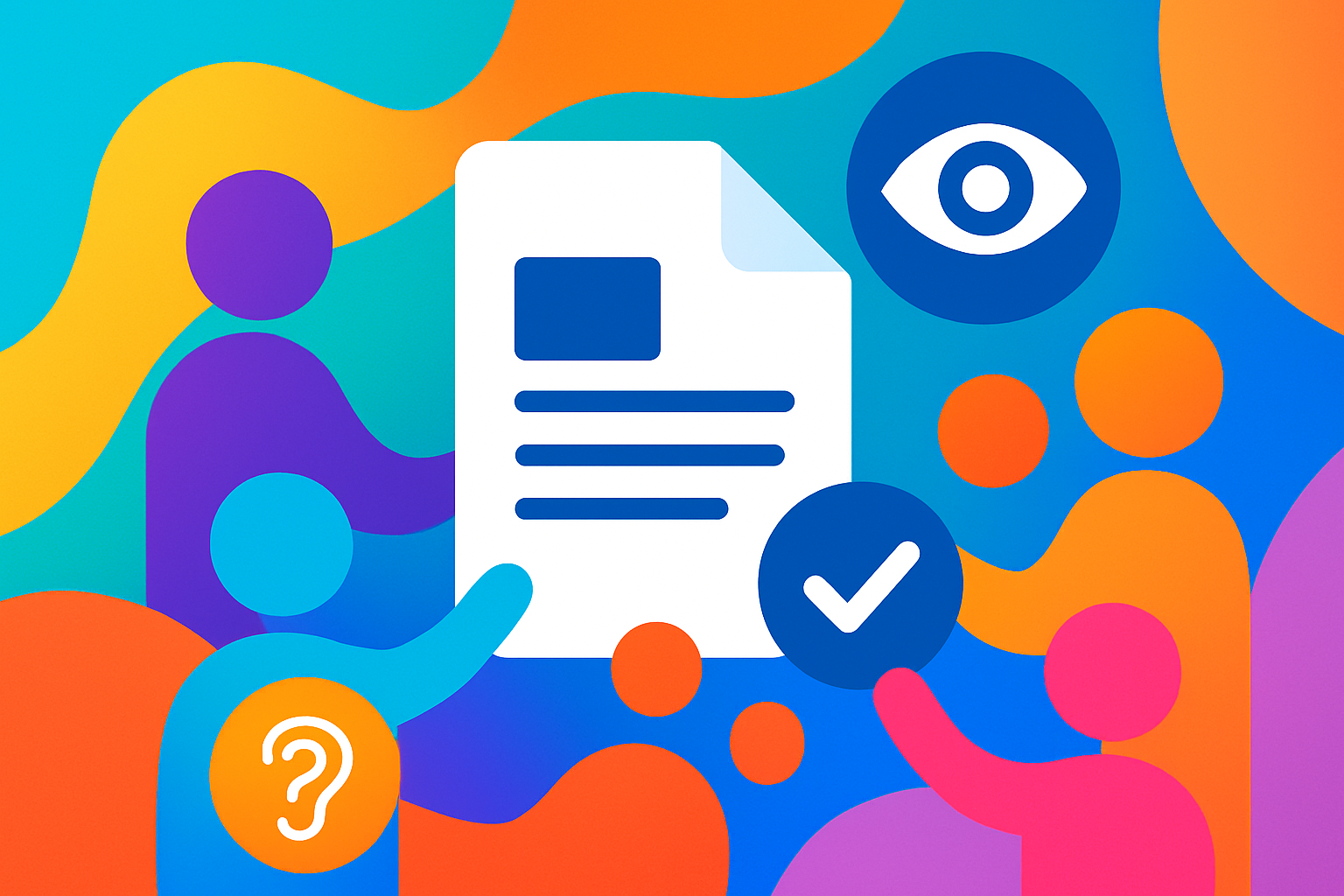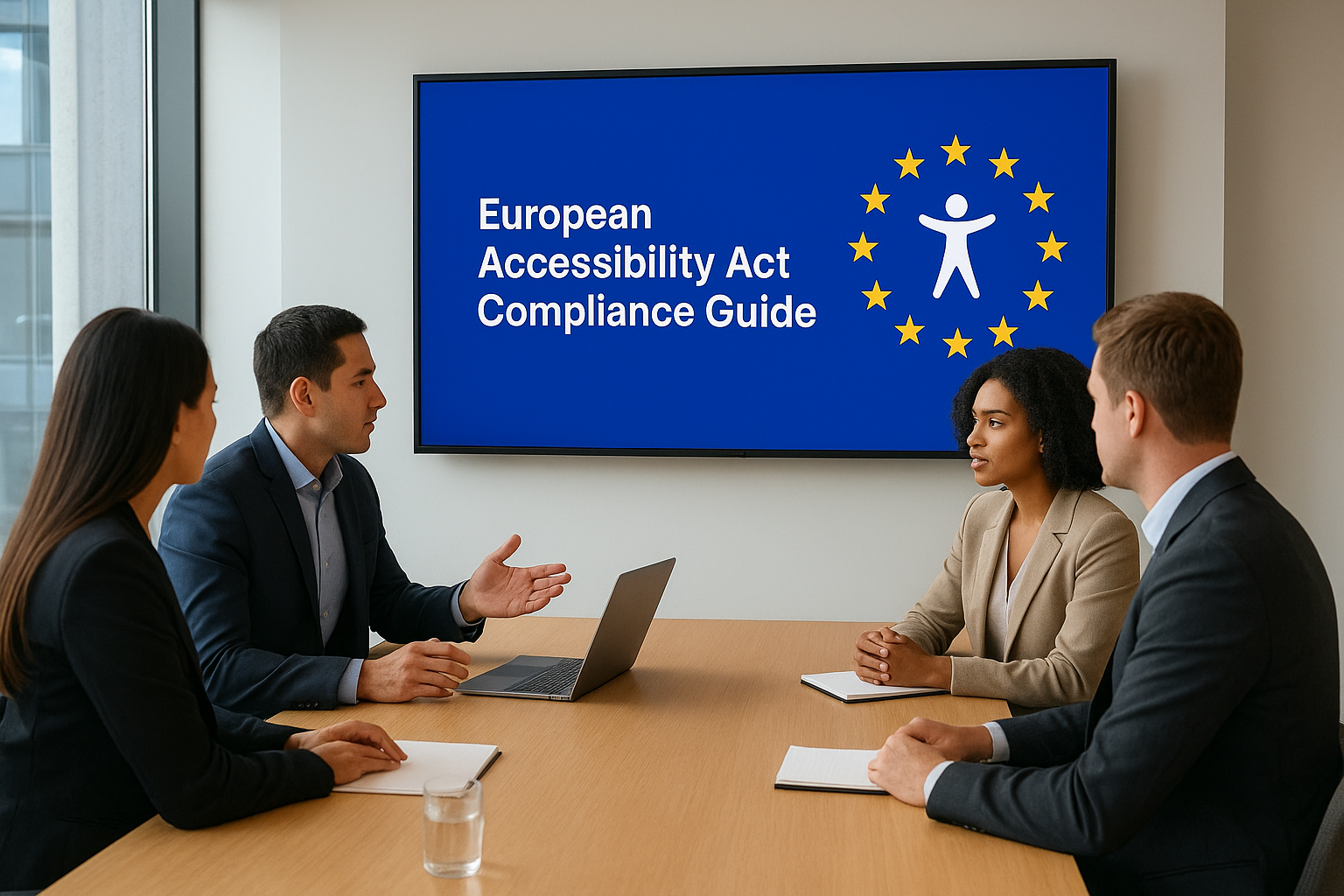PDF Accessibility: The Hidden Key to Compliance and Inclusivity
Date Published: Aug 17, 2025
Date Modified: Aug 17, 2025
An accessible PDF is one that people with disabilities can perceive, operate and understand- especially with assistive tech (screen readers, braille displays, voice control). In practice, that means the PDF has a correct tag tree (headings, lists, tables, alt text, reading order), sensible navigation (bookmarks, links) and content that meets W.C.A.G. criteria (contrast, language, no flashing, etc.). W.C.A.G. is the global benchmark referenced by many laws and standards.
There’s also a dedicated PDF standard called PDF/UA (ISO 14289) that defines what a universally accessible PDF should contain. (Think of it as the “native” accessibility spec for PDFs.)

How do you achieve it? (Fast, reliable workflow)
-
Author it right (best place to fix things)
- Use proper styles in Word/Google Docs/InDesign: real headings, lists, table headers, alt text, document language, meaningful link text.
- Avoid scanned-only PDFs; if you must, run high-quality OCR first.
- Export to tagged PDF (enable “Document structure tags” / “Create tagged PDF” in the exporter).
-
Remediate in Acrobat or similar
- Open the Tags panel, check/repair the logical structure and reading order; everything must be tagged or marked as artifact.
- Add alt text for images/figures; set table headers and scope; label form fields; add bookmarks to long docs; set document language and title metadata.
- Run an accessibility check, then manually review with a screen reader (NVDA/JAWS/VoiceOver) to confirm the real experience.
-
Validate against the standards you need
- W.C.A.G. 2.x AA (policy driver globally) and/or PDF/UA if your org requires it.
- Use checklists and techniques from W3C (W.C.A.G. Techniques include a PDF section) and your regulator’s guidance. Automated tools help, but human review is essential.
-
Ship with documentation
- Publish an Accessibility Statement (what meets, what doesn’t, how to request alternatives). Many laws explicitly require this for public-sector bodies.
Who should take it seriously? (Short answer: everyone)

- Public sector & education (legal obligations almost everywhere).
- Healthcare & insurance (vital information, legal risk).
- Banking/fintech & utilities (statements, bills, forms).
- Legal, HR and enterprise communications (policies, contracts).
- E-commerce, travel, telecom (product docs, invoices, tickets).
These sectors frequently publish PDFs that are essential for customers and citizens, so accessibility is both a compliance and a customer-experience must.
Laws & standards around the world (high-level map)
Global baseline:
- W.C.A.G. 2.x (W3C) is the technical foundation many laws reference.
European Union & EEA:
- Web Accessibility Directive (2016/2102) requires public-sector websites & apps to meet harmonized standards and publish accessibility statements (covers downloadable docs like PDFs).
- Harmonized standard EN 301 549 (v3.2.1) maps to W.C.A.G. 2.1 and includes requirements for electronic documents.
- European Accessibility Act (2019/882) extends accessibility to private-sector products/services (enforcement phased from June 28, 2025).
United Kingdom:
- Public Sector Bodies (Websites and Mobile Applications) Accessibility Regulations 2018 require meeting W.C.A.G. and publishing an accessibility statement; older non-essential PDFs (pre-23 Sept 2018) can be out of scope. The Equality Act 2010 underpins enforcement.
- ADA Title II final rule (2024) sets W.C.A.G.-based web & mobile requirements for state/local governments; documents provided online fall within scope. (Many agencies treat posted PDFs as covered content.)
Canada:
- Accessible Canada Act framework ; Canada has also adopted CAN/ASC-EN 301 549:2024 (national standard mirroring the EU’s EN 301 549) for ICT accessibility, which includes electronic documents. Provinces (e.g., Ontario’s AODA) add specific duties referencing W.C.A.G. for public content (including PDFs).
India:
- RPwD Act 2016 establishes accessibility obligations; government digital properties follow GIGW 3.0 (Guidelines for Indian Government Websites/Apps) which incorporate accessibility and are audited by STQC/NIC- applicable to documents hosted on government sites.
Australia, NZ, others:
- National disability laws often reference W.C.A.G. and/or adopt EN 301 549 for ICT procurement; government web standards typically require accessible electronic documents. Check your jurisdiction’s regulator for exact scope and dates.
Note- When in doubt, aim for W.C.A.G. 2.1 or 2.2 Level AA + PDF/UA. That combination is widely accepted and future-proof.
References
- Section 508 (U.S. Rehabilitation Act)
- Americans with Disabilities Act (ADA)
- W3C Web Content Accessibility Guidelines (W.C.A.G. 2.2)
- UK Public Sector Bodies Accessibility Regulations (2018)
- Accessibility for Ontarians with Disabilities Act (AODA)
- Global Web Accessibility Laws & Policies (W3C)
- U.S. Department of Health & Human Services – Disability Rights
- Australia – Disability Discrimination Act (1992)
- European Accessibility Act (EU Directive 2019/882)


